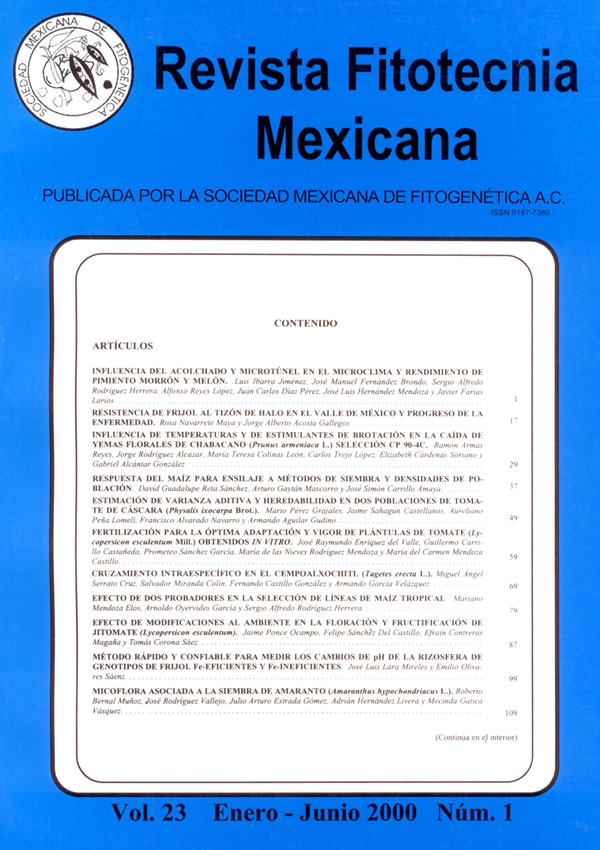EVALUACIÓN DE MAÍCES PRECOCES E INTERMEDIOS EN VALLES ALTOS CENTRALES DE MÉXICO. I. POBLACIONES SOBRESALIENTES
Contenido principal del artículo
Resumen
Considerando que para iniciar un programa de mejoramiento genético de maíz (Zea mays L.) es indispensable seleccionar las fuentes germoplásmicas de mayor variabilidad genética para generar alternativas que determinen la dirección del programa, el propósito de esta investigación fue utilizar la variabilidad genética de algunas fuentes germoplásmicas para dar inicio a un programa de mejoramiento genético. Fueron sembradas 121 poblaciones en Metepec, Tecámac, Montecillo y Chapingo del estado de México en 1993, bajo el diseño látice simple duplicado por la localidad. Se realizaron análisis de varianza por localidad y combinado de días a floración masculina, femenina y rendimiento. Se hizo la comparación de promedios mediante la prueba de Tukey (p≤ 0.05), y la interacción genotipo-ambiente para cada variedad se estudió utilizando parametros de estabilidad. Los resultados mostraron diferencias altamente significativas entre localidades, variedades, variedades x localidades y la interacción variedades x ambientes (lineal), permitiendo la selección de las variedades sobresalientes: Mex-38, Mex-495, Mex-581, Cr. de Almoloya de Juárez, Cr. de Acambay, Cr. de Mezquital SM-14 sequía, Cr. de Jiquipilco, Cr. de Santiago Yeche, Hgo-86, Mich-21, Compuesto de Amplia Base Genética, Población de Amplia Base Genética, Pue-502, Pue-375, Pue-382 y Tlax-278, para iniciar un programa de mejoramiento genético. También se detectaron las variedades siguientes: Gto-124, Cafime SM 13 sequía, Pue-449, Pue-501, Pue522, Dgo-159, Pue-451 e Hgo-80, para ambientes con potencial restringido.

